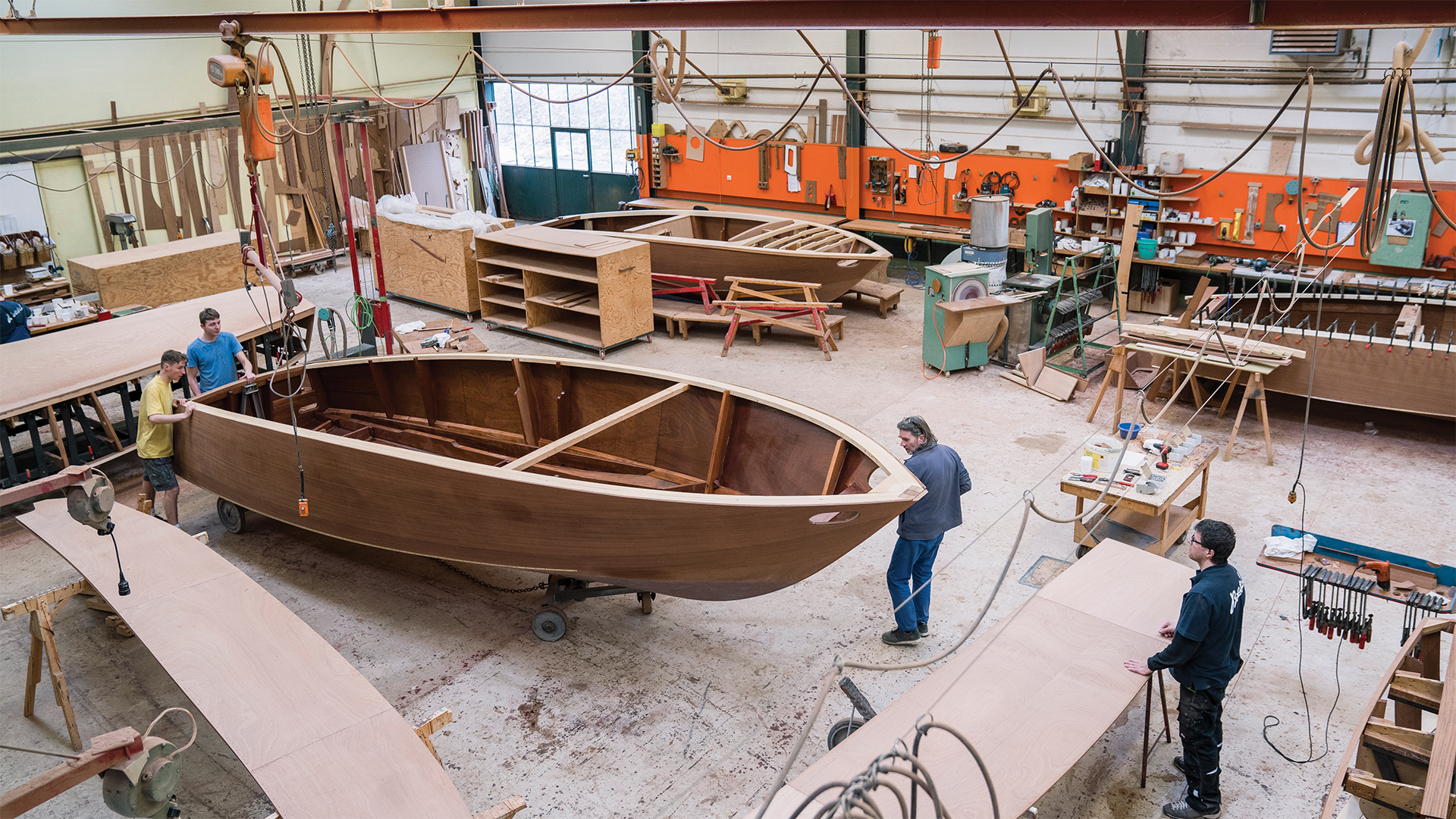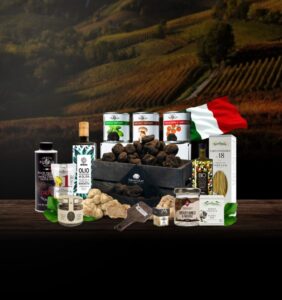
On Switzerland’s banana-shaped Lake Zurich, two coasts gaze across the placid water at each another. The international, sunset-dappled eastern shore is famed for its terraced vineyards laced with walking trails, splashy swimming badis and celebrity residents, including Tina Turner and Roger Federer. Aptly called the Goldküste, or Gold Coast, it’s a prime spot to dip your Vilebrequins into the lake while charging your Tesla, dozens of which line the residential streets. (It’s Switzerland’s number-one selling car, after all, beloved locally for its engineering, not its status.) The opposite, western coast is decidedly more Swiss, with modernist 1950s Reform churches, a chocolate factory and old mills converted into art spaces. It’s enveloped by the shade of its own mountain a few hours earlier than its neighbor each evening, earning it the nickname the Pfnüselküste—the Sniffle Coast.
If you think the east coast is better than the west, you’ve failed the ultimate Swiss litmus test: the ability to identify discreet luxury. Sure, the show-pony Gold Coast has beautiful sunsets and split-level homes surrounded by sunken fire pits and infinity thermal pools. But in this tiny nation, luxury and quality are whispered, not shouted, and the flashiest is seldom the best. It takes a trained eye to understand the austere appeal of the Sniffle Coast. For starters, much of it is outside Canton Zurich, in an area notorious for its tax breaks. Because of that lucrative perk, many heritage Swiss businesses planted themselves here long ago and haven’t budged since.

Pedrazzini Yacht’s Vivale Veloce, the first model Claudio designed himself, on Lake Zurich. Clara Tuma
Two such Pfnüselküste enterprises have been embracing this philosophy for over a hundred years. Wooden-boat builders Pedrazzini Yacht and Boesch both specialize in handmade wooden runabouts and rely almost exclusively on a hyperlocal, discerning Swiss market for sales.
In short, what makes the two Swiss companies stand out is that they work solely in wood, not fiberglass. Even iconic Italian runabout boatmaker Riva stopped using wood for its hulls in 1996. But the competing Swiss yards offer additional, nuanced differences. Boesch, for instance, uses a cold-molded technique with laminated high-tech plywood from West Africa. What may be more important to appreciate is that the amount of time and labor required by both companies to design and manufacture their vessels is immense. Properly drying the various woods—teak, pine, mahogany—can take up to a decade, for example. This level of “slow craftsmanship” is something the industry rarely sees anymore.

A fully varnished Boesch 970 St. Tropez de Luxe. Clara Tuma
Pedrazzini’s runabouts are forged of mahogany and swathed with 20-plus coats of lacquer. (The exact number is a trade secret.) As their name suggests, the boats feature understated hints of Italian design. In Pedrazzini’s words, they’re “bespoke,” which is why a basic shell of these classics starts in the six-figure range. The company produces no more than six vessels per year, each requiring over 4,000 hours of labor.
Pedrazzini is located in the village of Bäch, just over the line in Canton Schwyz. In the early 1960s, it was rumored that the yard was visited by an off-duty John F. Kennedy. The commander in chief—who frequently cruised around Cape Cod on the presidential yacht Honey Fitz—was evidently eager to test-drive a Pedrazzini. (The company is characteristically mum and says it has no record of such an event.) Back then, Bäch was known for its farms, mostly fruit and nut orchards with voluminous cherry, walnut and plum trees stretching down the meadows past half-timbered homes to the lakeshore.

Pedrazzini hulls under construction. Clara Tuma
Today, modernist lakefront apartments and summer homes outnumber fruiting trees, but Pedrazzini remains tucked into a small, shady cove, one of the last few working shipyards on the lake.
“The key to our success lies within the roots of our family, which include both Switzerland and Italy,” says Alessandro Pedrazzini, who represents the fourth generation involved with the company, founded in 1914 by his great-grandfather Augusto, who immigrated to Zurich from Lake Como, Italy.
“Ultimately, the success of our design comes from the fusion of Italian flair and style with Swiss craftsmanship based on quality and precision.”
Switzerland has long been a byword for quality, and the company embraces a philosophy that focuses on the highest levels of mastery, which has made it a bastion of traditional boatmaking expertise for 108 years. “Our aim is that Pedrazzini boats are passed on from one generation to the next,” says Pedrazzini, citing vessels that have been in the same families for over 90 years. Most of the company’s boats remain on Swiss lakes, though many navigate other European lakes and coastlines, and in recent years they’ve gained popularity in North America.

Alessandro Pedrazzini (left) and his father, Claudio, from the fourth and third generations, respectively, of the family business. Clara Tuma
Unlike Italy’s modern history of yacht building, with its 1950s Portofino glamour, 1980s superyacht excess in Viareggio or the Italian-lakes cool of Riva and other runabout makers, Switzerland’s shipbuilding narrative is more subdued, but it’s no less historical. Despite being landlocked, the area has a nautical tradition dating back thousands of years, to an era when Neolithic peoples lived in stilt-houses at the edges of lakes and rivers all through Central Europe. These and other ancient Bronze Age “pallafite cultures” occupied Switzerland from 5000 to 500 BCE and relied heavily on boats. Today there are 56 UNESCO-listed submerged archaeological sites across the Swiss Alps that remain waterlogged witnesses to this alpine maritime culture. Subsequent waves of occupying Celts and Romans were equally nautically minded. Julius Caesar sailed up the Rhône. Celtic swords and sailing vessels are frequently pulled from the lakes by underwater archaeologists today.
Long before roads, ski lifts and trains seamlessly and hyper-punctually connected Switzerland, boats also traversed its formidable mountains via the country’s numerous rivers and lakes. During the golden era of alpine exploration, Queen Victoria, Mary Shelley, Goethe, Charles Dickens and other celebrity visitors traveled through Switzerland by ship.
In the contemporary era, perhaps in an unconscious nod to the country’s tradition of superior horology, Swiss boats exude quality, but they take some unpacking to fully discern.
Boesch and Pedrazzini stand apart because they offer a “classic” look that is “nearly as easy to maintain as a fiberglass hull,” says Gerald Guetat, a boat historian and author of several books on classic wooden examples. “A complicated timepiece is no longer something people know how to use, but it’s still exciting to wear Paul Newman’s chronometer on your wrist even if you’re not timing a lap in Daytona. It’s the same with wooden boats today. They’re a pleasure to use but require little knowledge on how the boat’s hull really performs.”
After the two World Wars, Italians escaping the devastation in Italy poured into Switzerland to find work, many bringing their artisanal skills with them. Bäch became one of the country’s hubs of immigrants and, eventually, secondos, first-generation Swiss born to émigré parents. To outsiders, Switzerland might seem like an insular nation. But it was these waves of migrants that helped create and develop modern Switzerland’s reputation for luxury, not just with boats, but in watchmaking, chocolate production, banking and engineering. In turn, they absorbed Swiss culture. “Discretion is to the Swiss what hand gesturing is to Italians,” says one boat owner who wishes to remain anonymous. “The immigrants who came to Switzerland had the skills of the trade, but they had to learn the Swiss art of discretion.” Pedrazzini excelled in this regard, partially just by remaining a small outfitter. Boesch’s wood-shingled shipyard in Kilchberg, almost 15 miles north of Bäch, is a time capsule of old Switzerland. It’s directly across the street from the Lindt chocolate factory, where the scent of sweet confections regularly permeates the air. A loan from the Lindt family after World War I helped Jakob Boesch take over the yard where he’d started working a quarter-century before. Like Pedrazzini, Boesch’s strategic position on the lake allows it to accommodate its local customers via a marina in summer and a service facility for winter storage and repairs. (Boesch also owns yards on three other major Swiss lakes, primarily for moorings and maintenance.)
“When my great-grandfather Jakob was starting out on his own in 1920, he was basically doing what every other boatyard in Central Europe was doing: building boats on order,” says Markus Boesch, who, like competitor Alessandro Pedrazzini, is the fourth-generation head of his family business. “The client described what he wanted, and Jakob or his foreman would make a few sketches and drafts in order to illustrate a possible project. All these boats were built with traditional methods.”

Markus Boesch in the Kilchberg workshop, which dates to 1895 and where workers repair and refit boats built from 1950 onward. Clara Tuma
After World War II, Markus’s grandfather Walter traveled to the US to look for engines and studied the famed assembly lines in Detroit’s automobile industry. He introduced the concept of serial production to the European boat industry with the small runabout Boesch 500 in 1953, a sleek model that drew high-profile buyers in the 1960s, among them Udo Jürgens and Romy Schneider. The design was a game-changer. In 1964, his father Klaus introduced the Boesch 510 with what he termed BLT—Boesch Laminate Technology—a proprietary technique that bonds together layers of mahogany plywood to create a more stable, torsionally rigid body. Since the late ’60s, all Boesch boats have been constructed with this method.
And now, the company is coming full circle, with a renewed focus on one-of-a-kind designs. “Bespoke is more and more important to us,” Boesch says. “About the only boats we build as ‘standard’ are our demo units for boat shows and test drives. We usually do one refit per year as a ‘showboat’ in our classic department.” And in that Swiss tradition of circumspection, he adds, “We have a history of doing things first before talking about it, and this separates us from others in our industry who use a lot of computer animations and renderings of new projects to attract potential buyers. We build prototypes first and then make photos and video shoots.”
Boesch, which builds only 15 vessels per year, focuses on withstanding weather and wear. Its boats have been numbered consecutively since 1920, and 3,000 of nearly 4,000 are still on water today. The vessels are increasingly known as perfect water-ski craft, designed to be low-noise and low-wake. Guetat chalks up Boesch’s success to “long-term relationships with lake residents.” But the boat historian discourages considering either Boesch’s or Pedrazzini’s business model in the context of the yachting industry. “These yards belong more clearly to the market of high luxury goods made by hand, on a very small scale, like a jeweler or a bespoke watchmaker, or a leather good craftsman in Florence, Italy,” he says.

A new Boesch Sunski 625 at the boatyard. Clara Tuma
Boesch emphasizes instruments and gauges on the panel, making its partnership with Swiss watchmaker IWC Schaffhausen a natural collaboration. They introduced their first co-branded watch in 2008. In 2020, for the boatmaker’s 100th anniversary Century Edition runabout model, which features a hull painted in gold at the waterline, IWC designed the gauges and instruments, as well as a celebratory watch, the Aquatimer Automatic Edition “Boesch” caliber 82110, with a skeleton case and a rotor featuring an 18-karat-gold propeller medallion, limited to 100 pieces.
Any longtime Pedrazzini owner would never switch to Boesch, as those boats might seem too austere. And vice versa for Boesch buyers, who shy away from the other’s shinier, sexier designs. “These boats appeal to a special type of client,” who value the workmanship and customization, says Katharina Poroli, CEO of Poroli Special Boats, which has offices in Mallorca, Düsseldorf, Munich, and Ascona, Switzerland, on Lago Maggiore. “Both brands belong to the history of Swiss boatbuilders, and on the Swiss lakes you can still find many of these very exclusive boats.”

A dashboard, with special gauges designed for the company’s centenary in 2020 by IWC Schaffhausen. Clara Tuma
Any rivalry is now a friendly one.
“Back in the 1970s, when Pedrazzini was sourcing our Boesch Marine engines through our yard, every time Alessandro’s grandfather came to pick up the engines, he had to bring the cash to my grandmother,” Boesch says.
“Today, we live and work on the same lake, have respect for each other’s work and even go to dinner together at the boat shows.”
And both yards lean into the particularities of their home base. As Pedrazzini says, “We do not see the aspect of being landlocked as something negative. Boat craftsmanship is deeply engraved into Swiss culture—just look at the Alinghi,” the Swiss team who built and sailed the vessel that won the America’s Cup in 2003 and 2007, becoming the first European crew to capture the historic prize. “We Swiss just love to build things that excel.”

